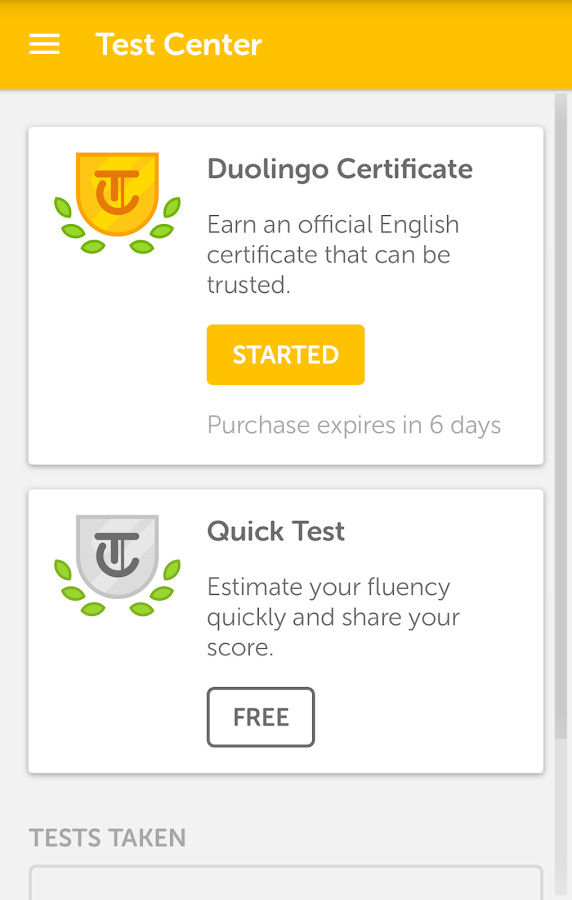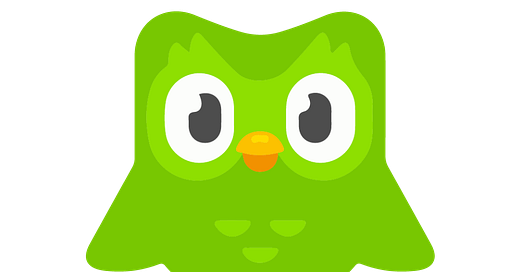With the Covid-19 lockdowns and the transition to the WFH setup, I suddenly found myself with an additional 2 hours on a daily basis. I decided to use these additional hours to learn Spanish with the only goal to help me in my travel adventures around the world as and when things go back to normal. I started my quest with Duolingo and within 3 months I can say - “sí entiendo Español” ( translation - I understand Spanish ).
As I look back on my learning journey - I was amazed at how Duolingo was able to retain me for 3 months though it’s snackable content, pedagogy and it’s inherent gamification feature which kept me coming back to the app. To understand more about the company, I did my own research and it seems there is much more to the company than just DUO! I was motivated to share this story with everyone and thus led me to write my first post!

Crowdsourced online translations shape the early business model
Duolingo was started by Louis Von Ahn ( PhD - CMU ) and Severin Hacker ( PhD- CMU) in 2009. It was Louis’s 2nd entrepreneurial venture after successfully selling his first company reCaptacha to Google.

Louis and Severin’s motivation behind Duolingo were extremely simple
Language learning software available in 2009 was extremely costly ( > $500 )
Machine Translation ( Google Translate ) in 2009 was not as mature as it is now
Duolingo was started with the mission to democratize language learning for everyone. The initial business model for Duolingo was
Teach users a new language for free
Ask users to translate online articles as part of the pedagogy ( Inspiration: reCaptcha )
Sell these online translations to media houses

Initial Launch
The first version of Duolingo was launched in 2012 with 100k beta users with more than 500k users on their waiting list. The news about Duolingo spread like wildfire and very quickly the App had about 250k active users on weekly basis.
As the userbase grew, the founders started to develop the B2B aspect of the business to generate revenue. They were able to close deals with Buzzfeed and CNN. Duolingo was attractive to these businesses because
a. Lower cost of translation ( 4 cents/ word vs industry average of 6-10 cents/word )
b. A translation service that adapts to the cultural references and idiomatic things.
Post the partnership, Duolingo was now translating close to 600 articles on a daily basis. Now with money at stake, UX experimentation became a priority for the business as they had to keep the free user engaged in order to generate the revenue earning translations. These experiments were fairly successful and Duolingo was named as the App of the Year by Apple
The Pivot
The Duolingo B2B business model was doing a good job for the company but the founders felt it would not help them build the company they wanted. Focussing on the B2B service would divert internal company attention from the goal of providing language education to everyone.
In 2014, so instead of trying to split their focus between consumers and businesses, education, and translation services, Duolingo sharpened their focus on the consumer. The same year, Duolingo released Test Center, a beta service that allowed users to take a test at home on their own device and receive an English language certification.

An independent study found that scores directly correlate with TOEFL iBT, a standardized English test. a lot of employers (like Uber), universities (like the Harvard Extension School), and institutions (like the government of Columbia) started recognizing the test as legitimate almost right away. Duolingo helped this along by highlighting studies on its effectiveness and working directly with schools and institutions to get it recognized.
When Duolingo raised their Series C in 2014, one of their goals was to build a feature that would help teachers track students’ progress. So in 2015, in response to thousands of requests from teachers and education ministries in governments around the world, the team launched Duolingo for Schools. This is a program that teachers could use in the classroom to teach languages to their students.

Duolingo for Schools was completely free for students and teachers—it wasn’t a revenue stream for the company, but it was essential for increasing usage and making their programming even more accessible and valuable in ways that consumers needed. In just a few months, 100,000 teachers had already signed up.
In 2016, Thanks to their new funding, which brought them up to $83.3 million raised in total, Duolingo was able to start working on solutions for broader opportunities in education technology. Duolingo made the next logical progression to expand their market even further and created their own flashcard app called TinyCards. This helped them gain users in other education verticals besides language. TinyCards was well-positioned to succeed without significant added marketing efforts because there was already a large proven market for offline flashcards, and it was benefitting from Duolingo’s language app distribution channels.

In 2017, Since they stopped growing their business translation service, Duolingo’s main source of revenue was payments for tests in the Test Center. Though they had plenty of funding, they needed to continue building sustainable ways to monetize. This is how Duolingo finally came to the decision to start serving ads to users.
Though they previously said they didn’t want to serve ads, the company saw it as the lesser of two evils—serving ads meant they could monetize without building an enterprise sales team. Maintaining a good experience for the users was still the top priority for Duolingo, so they made sure that the ads were unobtrusive. They only appeared at the end of lessons and didn’t take away from the main objective for users: language learning.
Covid Effect
The Covid-19 pandemic has accelerated the adoption of new-age Edtech technologies and Duolingo has also experienced the same. Since the onset of the pandemic, the adoption and engagement of the app is through the roof, some metrics notable metrics
Active users in Europe, Latin America, USA, and India have more than doubled since March 2020
Frequency of engagement of the users across different geographies have increased by more than 50%
Duolingo School’s userbase has increased by over 50%.
Conclusion
As I tracked the journey of Duolingo as a company, some key learnings we can draw from the company growth are:-
Data-driven product optimization
One of Duolingo’s winning strategies was being data-informed. By making micro-changes, they were able to grow usage and engagement little by little. These incremental improvements may not have seemed like a lot at the moment—a 1% increase here, a 3% increase there—but over time, it added up. Thanks to their constant tiny optimizations, Duolingo climbed from 100,000 users to 200 million users (a 2000x increase) in 7 years.
Evolve your business model as the market evolves
If Duolingo had stuck to their original plan to monetize based on B2B services, they may not have developed all of the interesting and genuinely useful consumer use cases that they have now. Being flexible and experimenting with their business model has allowed them to make important changes that pushed the company forward while staying true to their original mission.
If you would like to hear more from me and encourage me to write more do subscribe, I will send out a post every 2 weeks.



